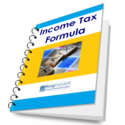The Employee Provident Fund Organization (EPFO) has come up with a fresh idea: more money should be deducted from your salary for Provident Fund (PF).
They have announced this via a circular dated 30 November, 2012. Read on to get the full details, and how it impacts you.
Provident Fund (PF) – Summary of Current Deduction
You can read everything about provident fund at “Provident Fund (PF) and Voluntary Provident Fund (VPF)“. But here is a quick summary.
Every month, a percentage of your salary is deducted by your employer, and is invested in your PF account on your behalf. The percentage of deduction is usually 12%.
PF is a long term, low risk, high return investment. It also offers multiple income tax benefits.
(Again, you can read the comprehensive article “Provident Fund (PF) and Voluntary Provident Fund (VPF)” to know more about PF)
PF Deduction – What is Changing
So far, the PF deduction was based only on your basic and dearness allowance (DA) – all other allowances were excluded from its computation.
Going forward, the deduction would take into consideration all allowances – all the allowances that you get would be added to your basic pay, and 12% of that would be deducted & deposited in your PF account by your company.
Example
Let’s say your Cost to Company (CTC) salary is structured as follows:
- Basic: Rs. 10,000
- Dearness Allowance (DA): Rs. 2,000
- Conveyance Allowance: Rs. 5,000
- Special Allowance: Rs. 20,000
- Total: Rs. 37,000
What Used to Happen So Far
- PF deduction = 12% of basic + DA = 12% of Rs. 12,000 = Rs. 1,440
- Take home pay (before taxes) = Rs. 37,000 – Rs. 1,440 = Rs. 35,560
What Would Happen Going Forward
- PF deduction = 12% of basic + DA + all other allowances = 12% of Rs. 37,000 = Rs. 4,440
- Take home pay (before taxes) = Rs. 37,000 – Rs. 4,440 = Rs. 32,560
Now do you you see the impact?
What Higher PF Deduction Means to You
Lower Take Home Salary
As we can see above, the disadvantage of including allowances for PF deduction means a higher PF deduction and a correspondingly lower take-home pay.
This would also result in you being able to borrow less – if your take home income is less, banks and financial institutions would be willing to provide you with correspondingly lower home loans, auto loans, etc (banks typically don’t want you to pay more than 50% of your take home salary as home loan EMI).
Higher Income Tax Benefit
Any amount you you invested in PF is deductible from your salary under Section 80C of the Income Tax Act. This helps you save income tax.
A higher PF deduction would mean a higher deduction from your income from calculating your income tax liability, which would result in you paying lower income tax!
However, please keep in mind that Section 80C only allows you to deduct an amount up to Rs. 1,00,000 every year. If you are already reaching that limit, the higher PF deduction would not save you any income tax.
Higher Company Match
Any PF deduction from your salary is matched by your employer – your company (or the government if you are a government employee) invests an equal amount in your PF account on your behalf!
Since your deduction is increasing, the company’s match would also increase – which means more free money for you!
Higher Retirement Corpus
PF is essentially your retirement account, and for most people, their provident fund account is the only retirement savings (another popular retirement saving account is Public Provident Fund or PPF).
A higher deduction and a higher company match means a larger amount would be invested in your PF account every month. Therefore, a larger amount would benefit from the compounding effect, and you would end up with a significantly higher retirement corpus!
The fact that PF is not taxed at all – it follows the Exempt Exempt Exempt or EEE taxation regime – will only help you more.
Conclusion – Is Higher PF Deduction Good for You?
If we consider everything, we see that you would get income tax benefits and a much higher retirement corpus in return for a slightly lower take-home pay.
I believe this is a good trade off, and should certainly benefit you in the long term.
Side Notes about CTC and Salary Structure
Many private companies used to structure the salary with a low basic and many allowances. This was done to lower your PF deduction and increase your take-home pay. With this change in PF deduction rules, we can expect some changes in our salary structures!
Also, if your company is really picky about your CTC, it might pass-on the burden of an increased PF match back to you, which means you could get a lower salary to begin with.





